Preface
From the Authors…
Since The Economy of Nature debuted in 1976, it has enjoyed a strong and loyal following. This edition, the seventh, begins a new collaboration. When we first talked about the book in 2009, it was immediately clear that we had a similar vision to retain everything instructors loved while updating it for today’s instructors and students. We asked hundreds of ecology instructors what they want to see in a textbook and we listened carefully to the challenges they face. You hold in your hands the result of a four-year effort to bring an exciting and completely new textbook to you and your students.
A new vision for the seventh edition.
Chapters are organized around four to six key concepts that are repeated as major headings and repeated again in streamlined summaries. This new structure allows the instructor and student to focus on the essential messages of each chapter.
The chapters contain substantially more figures showing real data with a better balance between terrestrial and aquatic systems. These changes will give students more experience in seeing and interpreting scientific data from a wide range of systems. We have also increased our coverage of species interactions, community ecology, and ecosystem ecology to provide a broader scope for an introductory course.
You told us that you want ecological applications integrated throughout the entire book rather than relegated to a final chapter. We agree, so every chapter now contains multiple studies with real-world applications that underscore the value of understanding ecology and that help students understand why ecology is relevant to their lives.
Like you, we strive to include global change throughout our ecology course. To make this possible, we now discuss global change issues in nearly every chapter. These changes help instructors and students make the connections between basic ecology and real ecological issues that affect their lives.
We know that students appreciate clear writing and strong visuals. To make the text an appealing study tool that students will want to read, we worked with superb editors who helped us put the science into plain language without diminishing the complexity of the concepts. We have also replaced nearly every photo, graph, and illustration in the book. We now give you and your students an abundance of spectacular photos, beautiful color illustrations, and easy-to-interpret graphs.
Presents the process of scientific discovery through a global lens.
As active researchers ourselves, we want students to know that science is an ongoing process. In every chapter we show students how scientists begin with hypotheses and test them with data that the students can view and interpret. We demonstrate how early hypotheses are continually revised as new observations and new data are produced. To help convey the dynamic nature of ecology to your students, we have retained all of your favorite classic studies while adding a large number of new, captivating studies from around the world, including many from 2010 to 2013.
xix
Takes a learning-by-doing approach to basic quantitative tools and the use of data.
You have told us that many of today’s students lack the background to apply basic quantitative tools. This edition contains a new feature, “Analyzing Ecology,” to help students learn basic statistical and mathematical techniques that real ecologists use every day. We show students how to do the math and then challenge them to apply it in “Your Turn.” We make a point of integrating these tools with research studies that are discussed in the chapters.
To help students gain more practice with quantitative skills, we created a feature at the end of each chapter, “Graphing the Data,” in which students are challenged to understand how to create and interpret different types of graphs. To provide immediate feedback to students, answers to both “Analyzing Ecology” and “Graphing the Data” exercises are provided at the back of the book.
Considers many scales and diverse habitats.
To make the seventh edition reflect the broad range of modern ecology, we have included examples from a wider diversity of organisms—from microbes to vertebrates. The section on species interactions includes new chapters on mutualism and parasitism to reflect the importance of these interactions in ecological communities. The research examples also come from a diversity of terrestrial and aquatic habitats.
Fosters ecological literacy through environmental applications.
As ecology instructors, we want to make the material interesting and relevant to our students—most of whom will not go on to become professional ecologists. Our addition of hundreds of applied studies demonstrates the relevance of ecology in students’ lives. Every chapter now opens with an attention-grabbing case study that highlights important and relevant research to pique student interest. Chapters end with an application called Ecology Today: Connecting the Concepts—examples of applied ecology that bring together the major concepts of the chapter and demonstrate their practical importance in a variety of arenas including human health, conservation, and managing our environment.
While making all of these improvements, we were committed to streamlining the book from 27 to 23 chapters, so it will be more manageable for a one-semester course. Our goal is to give you a text that presents the material most relevant to class lectures, discussions, and activities. Based on feedback from hundreds of ecology instructors whom we asked to read the chapters, there is broad agreement that this new edition is a beautiful book that will intrigue your students and capture their interest. We look forward to hearing from you as you review the book and we encourage you to share your thoughts with us.
Robert Ricklefs Rick Relyea
xx
Acknowledgments
We were incredibly fortunate to work with a tremendous group of people who made this new edition possible. As with every textbook, each chapter began with a text manuscript and an art manuscript that moved through many revisions to make the final version clear and interesting to undergraduate students. We had the privilege of working daily with developmental editor Rebecca Kohn and art editor Lee Wilcox. These two individuals played a major role in dramatically revising this new edition. The project was kept on track with the great help of project manager Karen Misler. Claire Hunter handled all the reviewing and surveys and conducted focus groups on the text’s design. Other individuals who played key roles in the book’s success include senior acquisitions editor Jerry Correa, project editor Elizabeth Geller, copy editor Fred Burns, art director Diana Blume, layout artist Sheridan Sellers, and production manager Susan Wein. Our replacement of nearly every photograph, graph and illustration required a tremendous effort by a spectacular team; MGMT produced beautiful graphs, Nicolle Fuller of Sayo Art produced stunning illustrations, and the team of Deborah Goodsite and Christine Buese were tireless in hunting down just the right photo to meet each of our requests.
During the past six editions, countless colleagues and instructors have helped shape Ecology: The Economy of Nature into a book that has introduced tens of thousands of students to the wonders of ecology. We are extremely grateful to these colleagues. As we undertook a major revision with this seventh edition, we once again received extensive help at every stage of development from many of our colleagues and fellow instructors. We extend our sincere thanks to the following people who graciously offered their time:
Loreen Allphin, Brigham Young University
Marty Anderies, Arizona State University
Tom Arsuffi, Texas Tech University
Betsy Bancroft, Southern Utah University
Paul Bartell, Pennsylvania State University
David Baumgardner, Texas A&M University
Christopher Beatty, Santa Clara University
Marc Bechard, Boise State University
Mark Belk, Brigham Young University
Michael F. Benard, Case Western Reserve University
Ritin Bhaduri, Spelman College
Andrew Blaustein, Oregon State University
Steve Blumenshine, California State University–Fresno
Michelle D. Boone, Miami University of Ohio
Jennifer Borgo, Coker College
Victoria Borowicz, Illinois State University
Alison Boyer, University of Tennessee
Judith Bramble, DePaul University
Shannon Bros-Seemann, San Jose State University
Ken Brown, Louisiana State University
Romi Burks, Southwestern University
Willodean Burton, Austin Peay State University
David Byres, Florida State College–Jacksonville
Walter P. Carson, University of Pittsburgh
Michael F. Chislock, Auburn University
George Cline, Jacksonville State University
Clay Corbin, Bloomsburg University of Pennsylvania
Douglas Crawford-Brown, University of North Carolina at Chapel Hill
William Currie, University of Michigan
Richard Deslippe, Texas Tech University
Hudson DeYoe, University of Texas–Pan American
James Dunn, Grand Valley State University
Kenneth Ede, Oklahoma State University–Tulsa
James Elser, Arizona State University
Rebecca Ferrell, Metropolitan State University of Denver
Kerri Finlay, University of Regina
Ben Fitzpatrick, University of Tennessee
Lloyd Fitzpatrick, University of North Texas
Matt Forister, University of Nevada
Norma Fowler, University of Texas at Austin
Rachel Elizabeth Gallery, University of Arizona Tucson
Pamela Geddes, Northeastern Illinois University
Linda Green, Georgia Institute of Technology
Danny Gustafson, The Citadel
Monika Havelka, University of Toronto–Mississauga
Stephen Hecnar, Lakehead University
Colleen Hitchcock, Boston College
Gerlinde Hoebel, University of Wisconsin–Milwaukee
xxi
Claus Holzapfel, Rutgers University–Newark
Robert Howard, Middle Tennessee State University
Jon Hubbard, Gavilan College
Anthony Ippolito, DePaul University
John Jaenike, University of Rochester
Steven Juliano, Illinois State University
Thomas Jurik, Iowa State University
Doug Keran, Central Lakes College
Tigga Kingston, Texas Tech University
Christopher Kitting, California State University–East Bay
Jamie Kneitel, California State University–Sacramento
Ned Knight, Linfield College
William Kroll, Loyola University of Chicago
Hugh Lefcort, Gonzaga University
Mary Lehman, Longwood University
Dale Lockwood, Colorado State University
Eric Long, Seattle Pacific University
Genaro Lopez, University of Texas–Brownsville
C. J. Lortie, York University
Roy Mason, Mt. San Jacinto College
Robert McGregor, Douglas College
L. Maynard Moe, California State University–Bakersfield
Don Moll, Missouri State University
Peter Morin, Rutgers University
Patrick Osborne, University of Missouri–St. Louis
Peggy Ostrom, Michigan State University
Michael Palmer, Oklahoma State University
Mitchell Pavao-Zuckerman, University of Arizona
William Pearson, University of Louisville
Bill Perry, Illinois State University
Kenneth Petren, University of Cincinnati
Raymond Pierotti, University of Kansas
David Pindel, Corning Community College
Craig Plante, College of Charleston
Thomas Pliske, Florida International University
Diane Post, University of Texas–Permian Basin
Mark Pyron, Ball State University
Laurel Roberts, University of Pittsburgh
Robert Rosenfield, University of Wisconsin–Stevens Point
Tatiana Roth, Coppin State University
Arthur N. Samel, Bowling Green State University
Nate Sanders, University of Tennessee
Mark Sandheinrich, University of Wisconsin–La Crosse
Thomas Sasek, University of Louisiana at Monroe
Kenneth Schmidt, Texas Tech University
Robert Schoch, Boston University
Erik Scully, Towson University
Kathleen Sealey, University of Miami
Kari A. Segraves, Syracuse University
Chrissy Spencer, Georgia Institute of Technology
Janette Steets, Oklahoma State University
Juliet Stromberg, Arizona State University
Keith Summerville, Drake University
Carol Thornber, University of Rhode Island
David Tonkyn, Clemson University
William Tonn, University of Alberta
James Traniello, Boston University
Stephen Vail, William Paterson University
Michael Vanni, Miami University
Eric Vetter, Hawaii Pacific University
Joe von Fischer, Colorado State University
Stephen Wagener, Western Connecticut State University
Diane Wagner, University of Alaska–Fairbanks
Sean Walker, California State University–Fullerton
Xianzhong Wang, Indiana University–Purdue University Indianapolis
John Weishampel, University of Central Florida
Gene Weller, Brigham Young University of Idaho
Marcia Wendeln, Wright State University
Tom Wentworth, North Carolina State University
Yolanda Wiersma, Memorial University
Frank Williams, Langara College
Alan E. Wilson, Auburn University
Kelly Wolfe-Bellin, College of the Holy Cross
Lan Xu, South Dakota State University
Todd Yetter, University of the Cumberlands
xxii
A new coauthor and new vision. The seventh edition welcomes Rick Relyea.
Every chapter of ECOLOGY The Economy of Nature, Seventh Edition has been restructured and rewritten to create an accessible, successful learning experience for a wide range of students.
Chapters are organized around four to six key concepts.

An organized learning experience.
xxiii
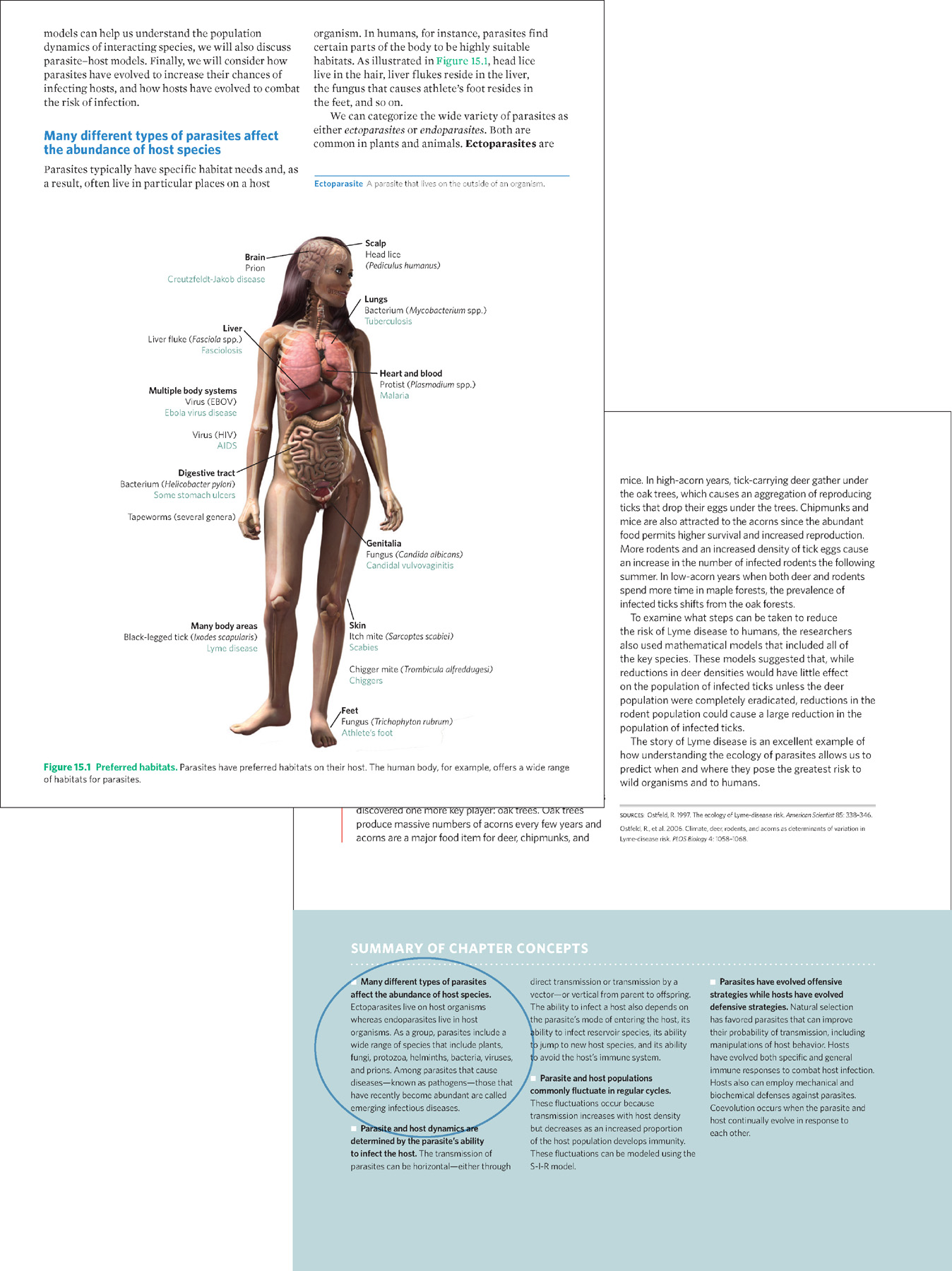
Chapter concepts are repeated in both major headings and streamlined summaries.
xxiv
Hundreds of aquatic examples

xxv
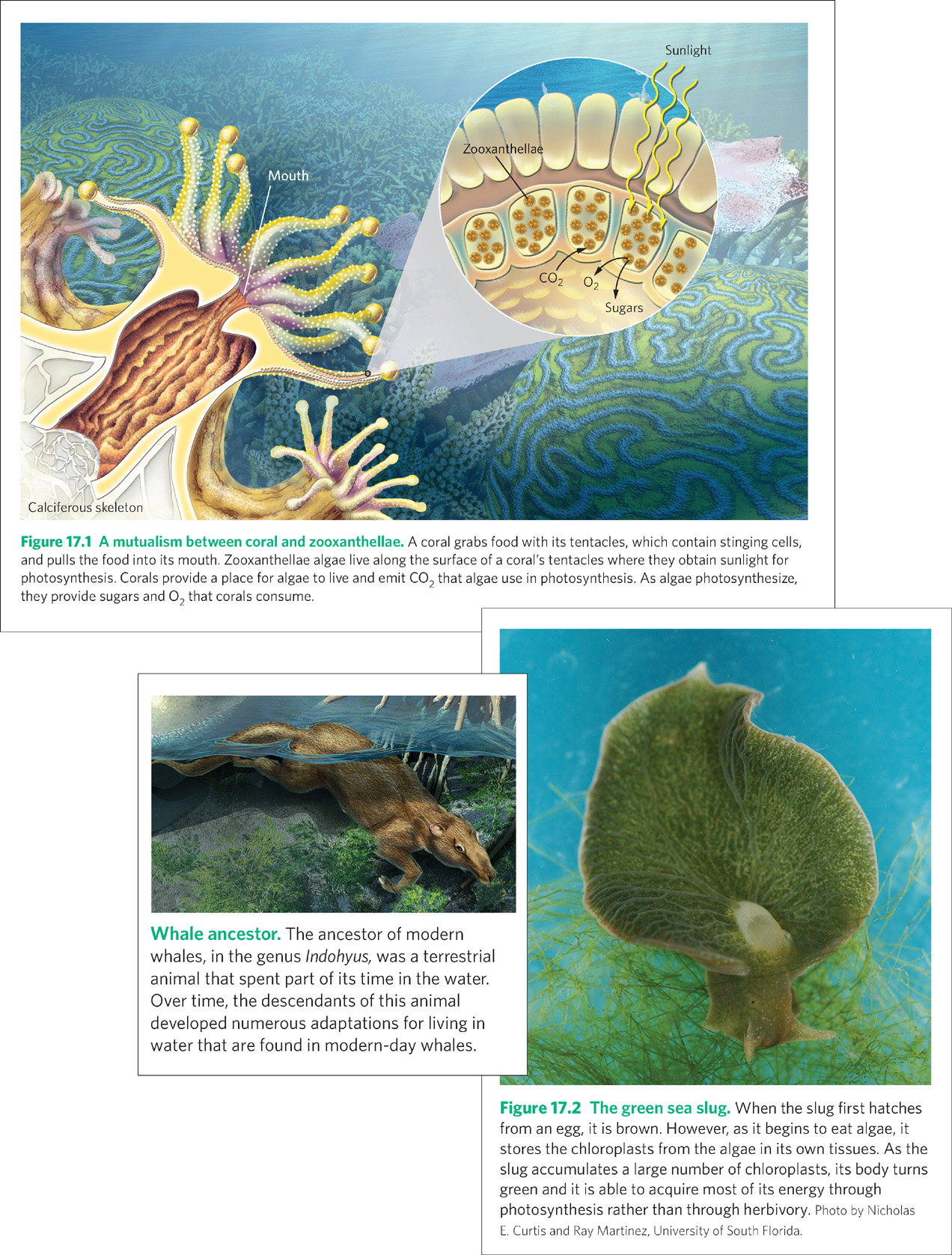
Each chapter contains a wealth of contemporary and classic examples.
xxvi
A modern approach to community and ecosystem ecology
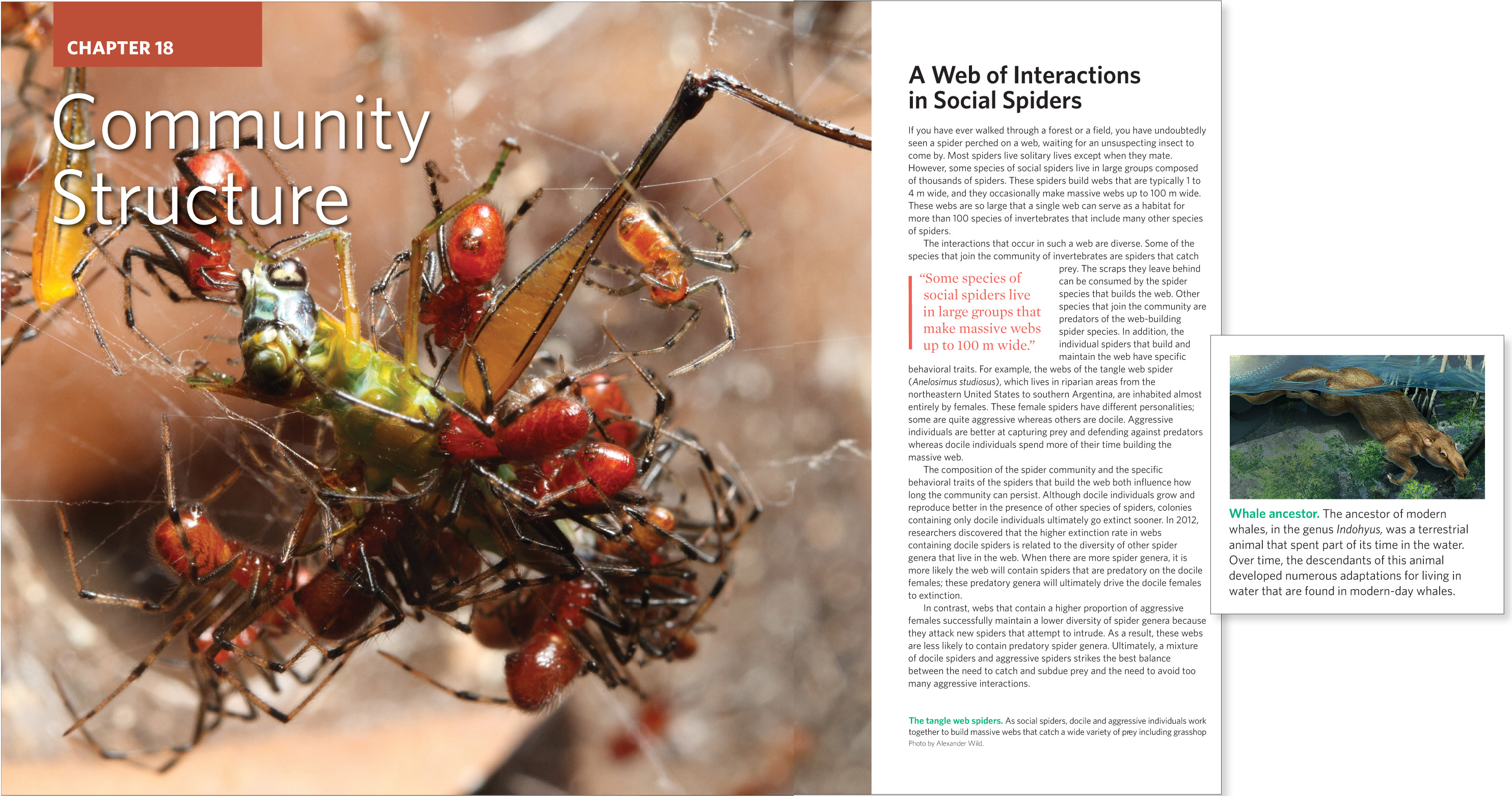
Enhanced coverage of species interactions, community ecology, and ecosystem ecology. Highlights contemporary approaches and research throughout.
xxvii
xxviii
Integrated applications to medicine and public health

Numerous examples show the relevance of ecological concepts to contemporary issues in public health.
xxix

Students see how ecological thinking is essential to our understanding of infectious disease.
xxx
Fosters ecological literacy through applications to conservation and the environment

Each chapter closes with ECOLOGY TODAY: CONNECTING THE CONCEPTS, a case study that applies multiple chapter concepts to a contemporary ecological issue. The effects and challenges of global climate change are considered throughout the text.
xxxi
xxxii
A learning-by-doing approach to basic quantitative tools and the use of data

ANALYZING ECOLOGY introduces mathematical and statistical techniques in relevant research contexts. YOUR TURN self-guided study problems provide opportunities for practice.
xxxiii

GRAPHING THE DATA problems help students to gain experience graphing real data.
xxxiv
Focus on scientific method and the process of discovery
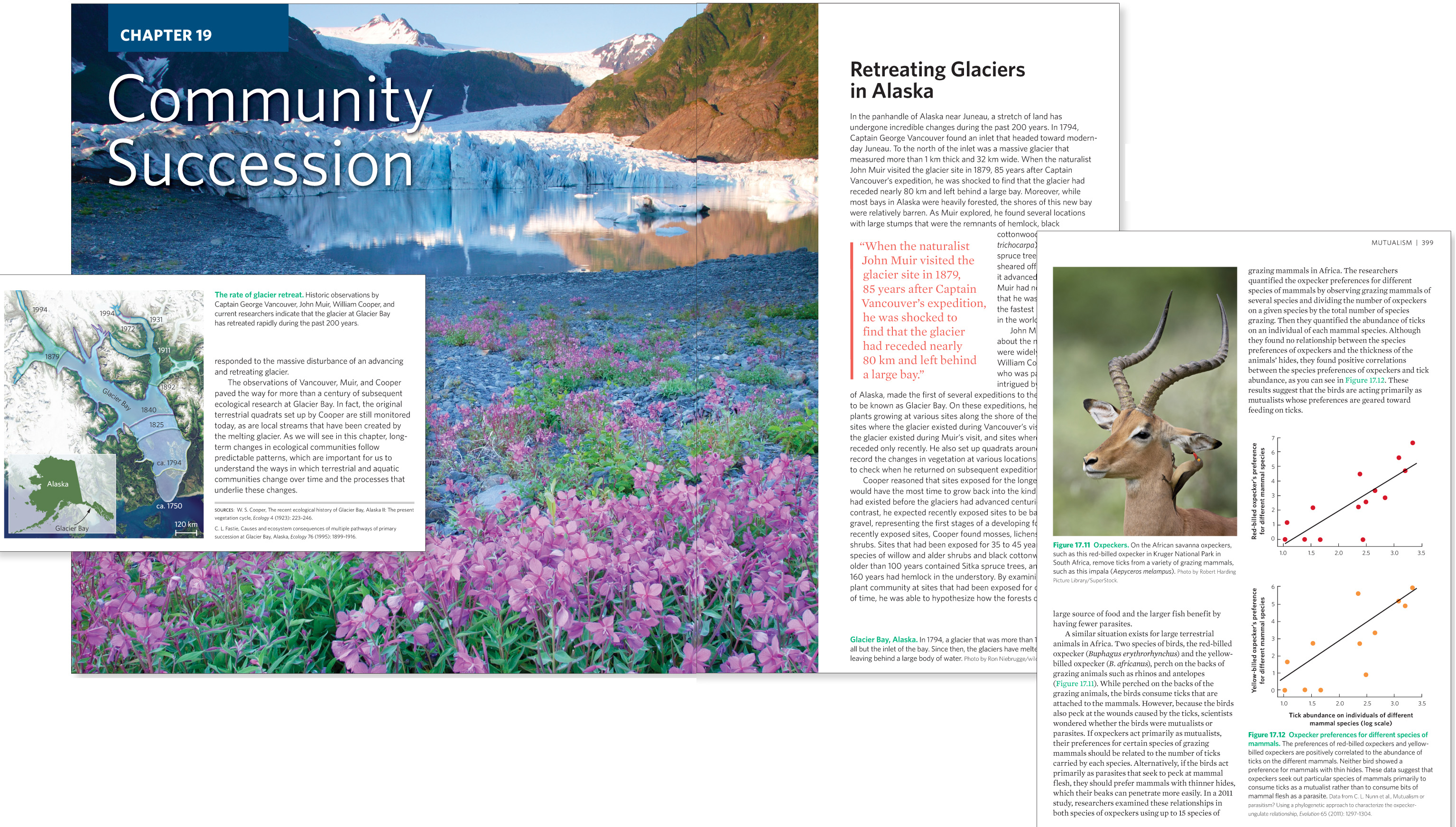
Students learn how researchers formulate and test their hypotheses. The text shows how researchers challenge and extend the work of those who came before them. Chapters present research from across the globe.
xxxv
xxxvi
Resources for Instructors and Students Create an Enhanced Teaching and Learning Experience
Test bank More than 80 questions per chapter test student understanding and integration of the concepts at six different levels from knowledge and comprehension checks to application, analysis, synthesis, and evaluation.

e-Book A complete online version of the textbook that allows the reader to highlight, bookmark, and add notes.

Activities Classroom activities use proven active learning techniques to engage students with the material and to encourage critical thinking.
Pre-lecture quizzes Quizzes for each concept heading help ensure that students have read the material before attending class.
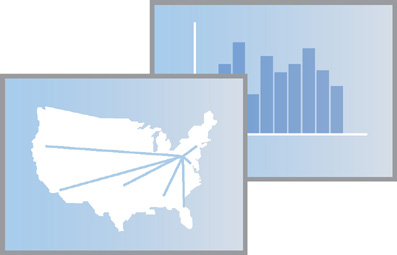
Enhanced lectures for PowerPoint presentations Lecture slides using dynamic, layered art taken directly from the text
Optimized art Photos and illustrations from the text in both JPEG and PowerPoint formats.
LaunchPad An intuitive online homework, e-Book, and class-management system that provides curated resources compiled into ready-to-use teaching units, complete with problem sets, activities, e-book sections, and state-of-the-art online quizzing and testing.
Flash cards Key terms and definitions in interactive flashcards.

LearningCurve A set of assessment activities that uses a game-like interface to guide students through a series of questions tailored to individual understanding. Personalized study plans are generated based on quiz results.
xxxvii